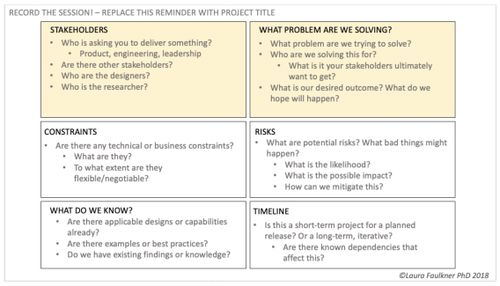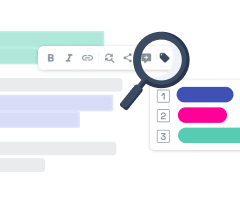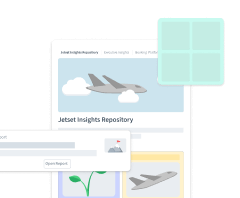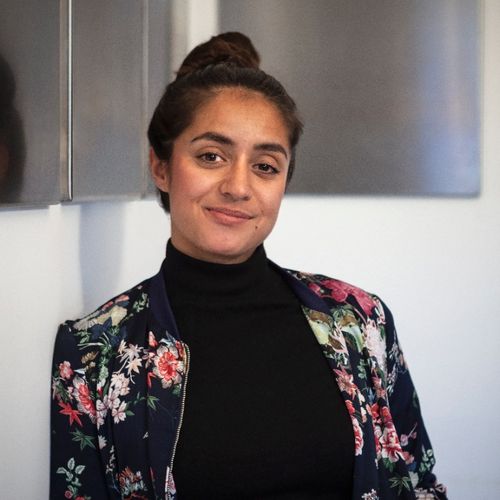
Stakeholder Intake Interview: Focus Your UX Research with This Framework by Laura Faulkner
How do you make sure the research activities really answer critical questions and drive key business decisions? Well, there is probably no one correct answer to this. However, Laura Faulkner addressed this challenge with her framework on intake conversations and research plans that you can use directly when a stakeholder comes to you with a research question.
She's convinced that it can be risky not to look closely enough at stakeholders' underlying goals behind research questions. Why? You could end up missing out on what you want to learn, ask the wrong question, or create frustration as people don't get an answer to their initial research interest. For researchers, this is an actionable method that allows you to get "the goals behind the questions."
This article introduces you to Laura's framework and the core element: the stakeholder intake interview.
Getting the why behind research requests
In a recent talk, Laura shared a personal experience from her research career on frustrated stakeholders and unnecessary research because they did not address the underlying research interest well enough in the first place. This experience and the urge not to repeat this fed into her framework on intake conversations and research plans.
It's all about staying goal-driven throughout the whole process. This starts at the beginning - the moment a stakeholder comes to you with a research question before you begin to collect research data. The framework aims to support researchers with understanding the question behind your stakeholders' questions. Then, when you actually get what stakeholders want, your research has a chance to impact the short and long term.
„Use your magical UX research skills to help stakeholders better define their own questions and needs.“

The intake interview
The starting point of Laura Faulkner's framework is the intake interview. It sets the foundation for a research plan with the proper focus afterward.
An intake conversation describes a seemingly informal conversation between you (the researcher) and the primary stakeholder, like, for example, a product manager. It should be a live conversation as soon as a new research request arises. With this framework, you can have that conversation following a process that will help you get the genuine underlying research interest right.
It's a guide for you as a researcher, not intended to be given to the stakeholder to fill in. Without a live conversation, you won't be able to drill the answers down and ask enough whys - and this is the method that will bring you the answers you're looking for.
„My pushing on the "why" questions helped them realize that the solution will miss their business objectives entirely. This is both a painful and satisfying moment.“

The following sections show the different fields to cover in the intake conversation. After some practice, Laura states that you will manage to get through this in about 20 minutes.
Tips for your first intake interview
Before we dive into the sections of the intake conversation and potential questions to ask, those three tips from Laura will guide you through to conversation:
Frame the whole conversation with your intention to help the stakeholder be successful - everything else will follow, and this will allow you to focus on research that has a chance to impact.
It's helpful to write down every question the stakeholders ask to get to essential points.
Always start with speaking about the problem statement - no big deal if it's the only topic of your conversation.
#1 Problem Statement: What problem are we solving?
Always start with this area. If time is running out and you only manage to speak about the problem statement, you will already have a valuable conversation and take away from that intake conversation. Your intake interview starts with the well-known question: What problem are you trying to solve?
Questions to answer: Problem Statement
What problem are we trying to solve?
Who are we solving this for?
What is it your stakeholders ultimately want to get?
What is our desired outcome?
What do we hope will happen?
#2 Stakeholders
Next, learn about the stakeholders. And by that, Laura refers to the stakeholder's stakeholders. This section will help you understand where research questions might come from and their context.
Questions to answer: Stakeholders
Who is asking you to deliver something? Product, engineering, leadership?
Are there other stakeholders?
Who are the designers?
Who is the researcher?
#3 Constraints
The other sections do not follow a strict order, so walk through them in your preferred order after speaking about the problem statement and your stakeholder's stakeholders.
Ask your interlocutor about known or assumed obstacles that might get in the way of the research you are about to conduct. There could be technical, business, or other obstacles already be known. If your stakeholder comes to you with the first solution in mind, speak about what it is that you're not allowed to do. Especially when they are already envisioning design solutions, they might have learned about technical restrictions or dependencies.
If you learn about constraints right at the beginning, you can discuss resolving strategies already or plan your research accordingly.
Questions to answer: Constraints
Are there any technical or business constraints?
What are they?
To what extent are they flexible / negotiable?
#4 Risks & Mitigations
Take some time to speak with your stakeholders about potential risks they know or might see coming. What you know upfront can't come as a surprise that makes research irrelevant or blocks a research project later on. Instead, it's a chance already to understand the likelihood of risks and mitigation strategies.
Questions to answer: Risks
What are potential risks? What bad things might happen?
What is the likelihood?
What is the possible impact?
How can we mitigate this?
#5 Existing assets: What do we know?
Make sure to learn about existing knowledge on your research topic. For example, was there a previous study? Do we have any relevant data already? And what do we already know? The main idea is to build on existing knowledge and avoid double work continuously. Questions to ask your stakeholder:
Questions to answer: What do we know?
Are there applicable designs or capabilities already?
Are there any examples or best practices?
Do we have existing findings or knowledge?
#6 Timeline
As simple as the headline - make sure to learn about the project's timeline to be impactful.
Questions to answer: Timeline
Is this a short-term project for a planned release? Or a long-term, iterative?
Are there any known dependencies that affect this?
The intake summary: Write down what you spoke about
Laura Faulkner's framework includes a template to place the information from the intake conversation in a structured and concise manner. Take the time to fill everything in - no matter if you will continue researching the project. She describes:
„What happens is that you take the burden from the stakeholder away to yourself. Invest this effort on the front, fill it in and share the one-pager with stakeholders. It becomes a reference during the whole research project.“

In this overview, you find the grid for your intake summary:

How to work with it? Copy of the structure of Laura's framework, add your research title, and replace the guiding questions with what you spoke about in the intake conversation. Here you can find an intake interview template 🖇 to get started.
What's next: from the intake interview to the research plan
In the next step, you can use this one-page summary to convert it into goals, questions, and objectives for your research project = the user research plan. It builds upon what you spoke about, and you will get the main elements for your research plan almost directly from your summary.
This article is inspired by Laura's recent talk at Firecat Studios, where she spoke about every step of her framework in detail. To learn more about the framework and Laura's work, check out her Medium articles as well.
Want to read more? Check out our articles about what a UX research repository can do for you and Communicating the value of UX as a Researcher.






